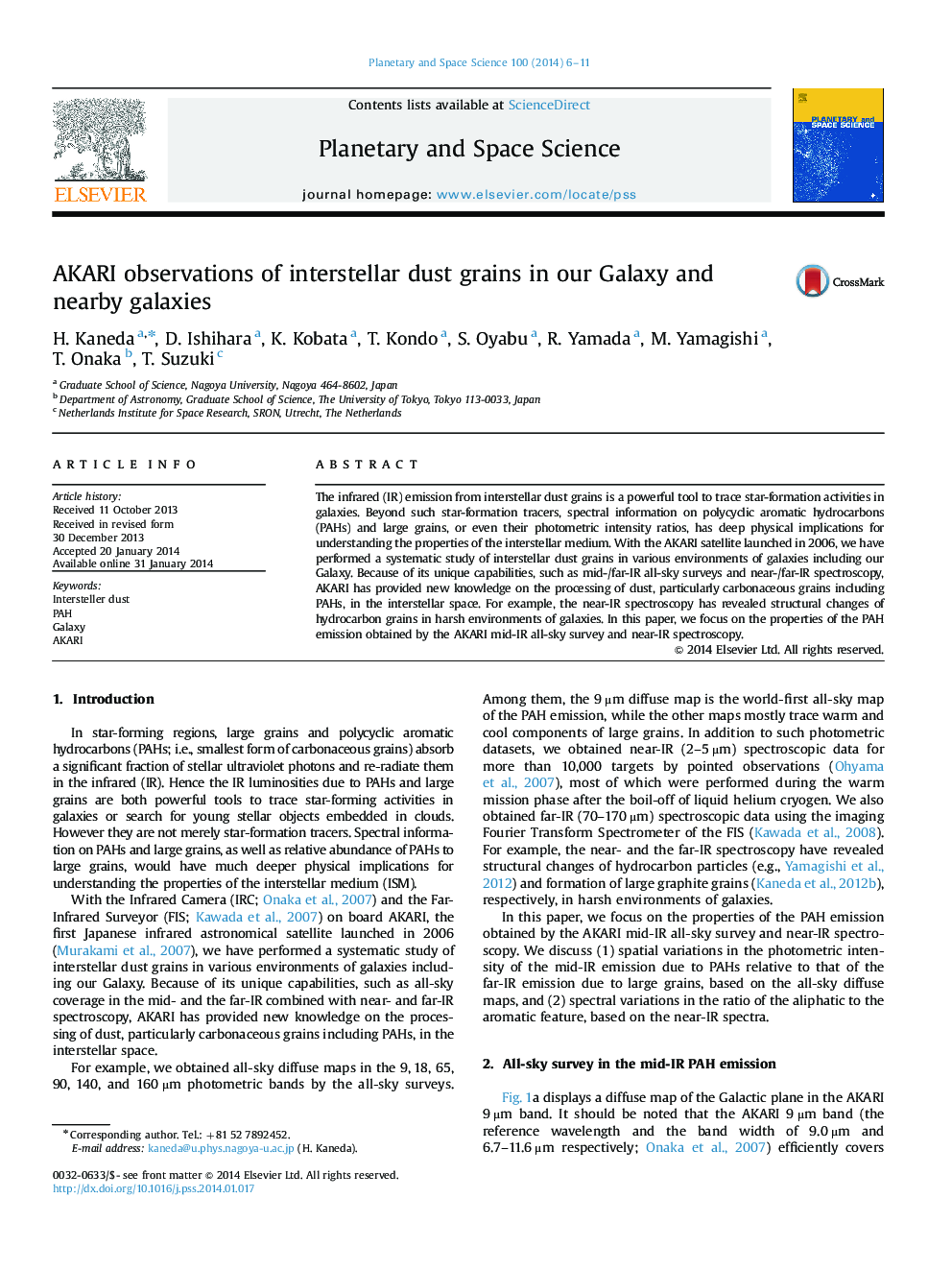| کد مقاله | کد نشریه | سال انتشار | مقاله انگلیسی | نسخه تمام متن |
|---|---|---|---|---|
| 1781101 | 1523937 | 2014 | 6 صفحه PDF | دانلود رایگان |
• With the AKARI satellite, we study the properties of interstellar PAHs and large grains in galaxies.
• AKARI has unique capabilities of mid-IR all-sky survey and near-IR spectroscopy for study of PAHs.
• The all-sky maps show that the intensity ratio of PAHs to large grains decreases in harsh conditions.
• The spectra reveal that the aliphatic fraction of PAHs varies much with the interstellar condition.
The infrared (IR) emission from interstellar dust grains is a powerful tool to trace star-formation activities in galaxies. Beyond such star-formation tracers, spectral information on polycyclic aromatic hydrocarbons (PAHs) and large grains, or even their photometric intensity ratios, has deep physical implications for understanding the properties of the interstellar medium. With the AKARI satellite launched in 2006, we have performed a systematic study of interstellar dust grains in various environments of galaxies including our Galaxy. Because of its unique capabilities, such as mid-/far-IR all-sky surveys and near-/far-IR spectroscopy, AKARI has provided new knowledge on the processing of dust, particularly carbonaceous grains including PAHs, in the interstellar space. For example, the near-IR spectroscopy has revealed structural changes of hydrocarbon grains in harsh environments of galaxies. In this paper, we focus on the properties of the PAH emission obtained by the AKARI mid-IR all-sky survey and near-IR spectroscopy.
Journal: Planetary and Space Science - Volume 100, 1 October 2014, Pages 6–11
